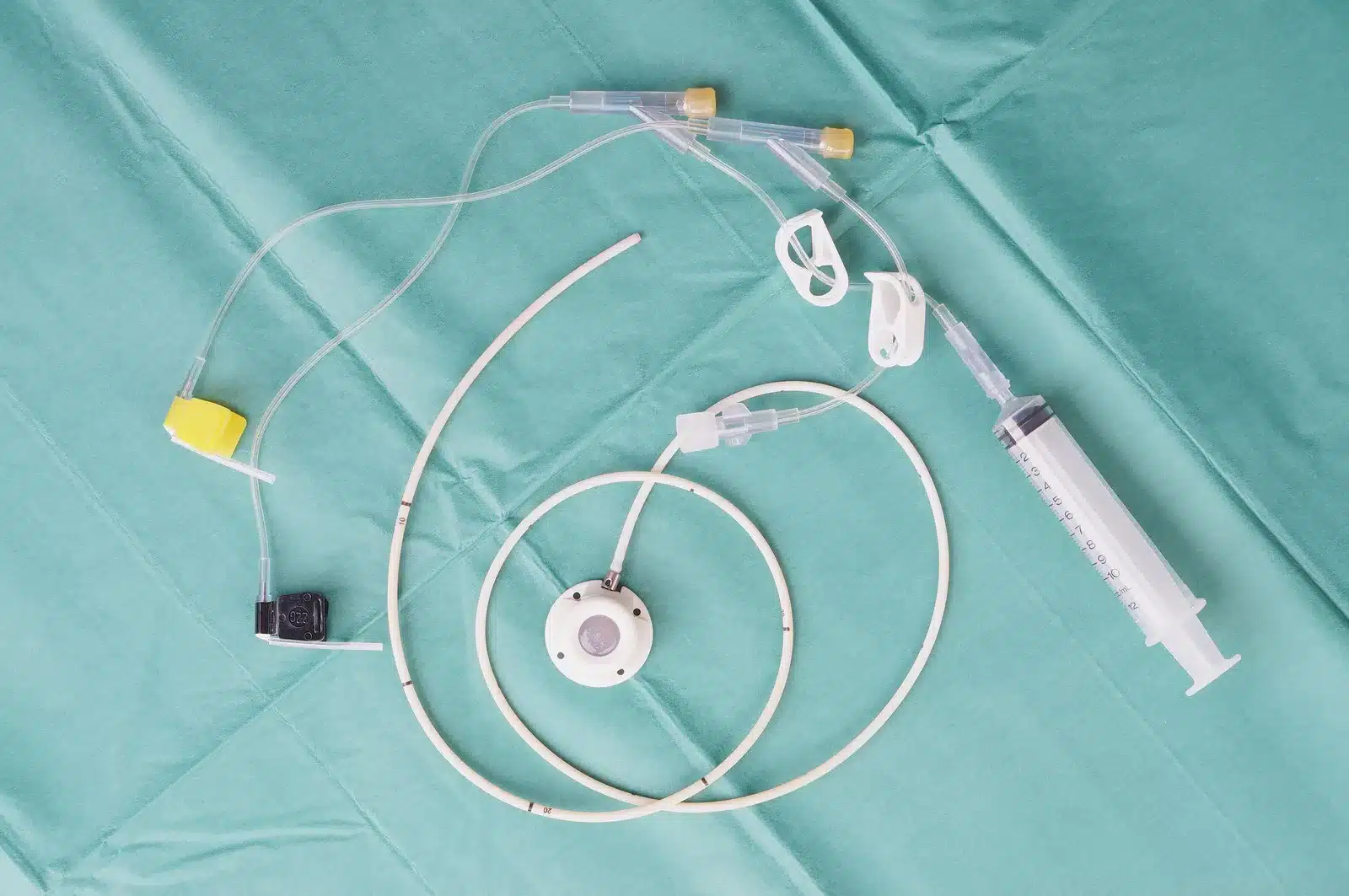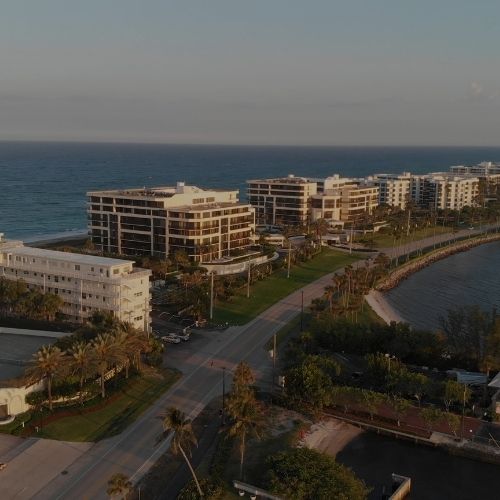Comprehensive Legal Guidance for the Nationwide Bard PowerPort Lawsuit

RTRLAW is spearheading litigation against Bard PowerPort, a widely used medical device linked to serious complications. We provide comprehensive legal support, delving into the intricacies of these cases to help affected individuals seek justice.
What Is a Bard PowerPort Device?
A Bard PowerPort device is an implantable port that provides secure, long-term access to a patient’s bloodstream. It is mainly used for chemotherapy, intravenous medications, and blood draws, especially for patients undergoing prolonged treatment.
The catheter, made from polyurethane and silicone, includes barium sulfate for better imaging visibility during imaging tests, such as X-rays and CT scans. However, this compound can degrade the device’s materials when in contact with human tissue, leading to potential complications.
What Is Wrong with the Bard PowerPort Devices?
Numerous complications have been linked to Bard PowerPort devices, particularly those made with a polyurethane and barium sulfate blend, prone to microfractures, deterioration, and cracking, posing severe health risks.
The complications associated with Bard PowerPort devices include:
- Catheter Fractures: By fracturing, fragments may enter the bloodstream, causing vascular damage and other severe health issues.
- Catheter Migration: The movement of the device from its original position causes obstruction of blood flow, infection, and organ damage.
- Infections: In addition, infections may occur from bacteria buildup in the small fissures and cracks caused by the device’s breakdown.
Despite its design for secure bloodstream access, the Bard PowerPort has shown significant issues, including material degradation and catheter problems. Vigilance in monitoring and early intervention is crucial for those using these devices.
Why Would You Use This Medical Device?
The Bard PowerPort medical device serves as a crucial tool for patients and their healthcare providers needing regular and prolonged access to the patients’ bloodstreams, significantly reducing the need for repetitive needle punctures. This device is particularly beneficial for:
- Chemotherapy Patients: Patients undergoing chemotherapy for cancer treatment may benefit from using a Bard PowerPort, as they require frequent administration of medications, fluids, and blood products.
- Patients Receiving Long-term IV Antibiotics: Those with chronic infections or conditions that necessitate prolonged antibiotic therapy via intravenous access also may benefit from using a Bard PowerPort.
- Patients on Total Parenteral Nutrition (TPN): People with digestive disorders or impaired gut function who need nourishment delivered directly into their bloodstream would use a Bard PowerPort.
- Dialysis Patients: Individuals undergoing hemodialysis, especially those with compromised vein access, may use Bard PowerPorts.
- Patients Undergoing Frequent Blood Transfusions: Patients who need blood transfusions, including those with certain types of anemia or blood disorders, may benefit from using Bard PowerPorts.
- Patients with Chronic Conditions Requiring IV Medications: Those people needing IVs, including patients with autoimmune diseases, severe gastrointestinal conditions, or other long-term illnesses may use Bard PowerPorts.
- Pediatric Patients with Long-term IV Needs: Children who require frequent intravenous treatments and for whom repeated needle sticks can be particularly traumatic are good candidates for Bard PowerPorts.
- Patients in Clinical Trials: Individuals participating in clinical trials that require regular blood samples or medication administration also may benefit from using Bard PowerPorts.
Using Bard PowerPort, patients experience less discomfort from frequent needle sticks, and healthcare providers can administer treatments more efficiently.
How Do I Know If I Have a Bard PowerPort?
The Bard PowerPort is a specific type of implantable port used to provide secure and repeated access to a patient’s bloodstream. To ensure that both the patient and healthcare providers are aware of the presence of this device and can manage it appropriately, several identification mechanisms are in place:
- PowerPort ID Card: Upon receiving a Bard PowerPort implant, patients are typically issued a PowerPort Identification Card. This card is a critical piece of documentation that should be kept with the patient at all times. It includes essential details such as the device model, serial number, and other unique identifiers that help medical professionals accurately identify the type of implantable port in use. This information is vital for ensuring that the device is accessed and maintained correctly, preventing potential complications.
- Visible and Palpable Features: The Bard PowerPort device itself is designed to be both visible and palpable beneath the skin. Patients and healthcare providers can feel the raised center of the port, where the septum for needle insertion is located. The PowerPort device also has a unique triangular shape, which can help in distinguishing it from other types of implantable ports.
- Training and Education: After the implantation of a Bard PowerPort, patients are usually provided with training and educational materials. These resources are designed to help patients understand how to care for their implantable port, recognize signs of potential complications, and know when to seek medical attention. Healthcare providers who work with patients with implantable ports are also trained to identify and manage these devices appropriately.
- Medical Records: Information about the Bard PowerPort implant, including its type and any relevant serial numbers or identifiers, should be documented in the patient’s medical records. This ensures that any healthcare provider who accesses the patient’s records can be aware of the presence of the implantable port and can refer to the PowerPort ID Card details for guidance on proper access and maintenance procedures.
By paying attention to these identification mechanisms and ensuring that all relevant information is readily available, patients and healthcare providers can work together to effectively manage the Bard PowerPort, ensuring optimal function and minimizing the risk of complications.
Is There a Bard PowerPort Class Action Lawsuit?
A Multi-District Litigation (MDL) has been established to consolidate Bard PowerPort lawsuits, overseen by Judge David G. Campbell in the U.S. District for the District of Arizona. This consolidation aims for efficient pretrial proceedings, with a bellwether process to determine potential outcomes for other cases.
As of Nov. 1, 2023, there is no class action lawsuit for Bard PowerPort; however, the MDL serves to consolidate individual cases for streamlined legal proceedings.
What Is Needed to Qualify for a Bard PowerPort Lawsuit?
To initiate a Bard PowerPort lawsuit, it’s essential to have a comprehensive understanding of the criteria and documentation required to establish eligibility and strengthen your legal position. Here’s an expansive guide on what is needed to qualify:
- Medical Records: You must have detailed medical records that chronologically outline your health condition before, during, and after the implantation of the Bard PowerPort device. These records serve as primary evidence of your medical history and the impact the device had on your health.
- Proof of Device Implantation: You can obtain proof of the implantation through medical receipts, hospital records, or a statement from the medical professional who performed the implantation. The documentation should clearly indicate that you had a Bard PowerPort device implanted.
- Evidence of Complications: You need to present tangible proof of the complications or injuries sustained as a result of the Bard PowerPort device. This could include additional medical reports, diagnostic tests, images, or expert medical opinions linking the device to the complications experienced.
- Timeline of Events: Establishing a clear timeline of events is crucial. This involves detailing when your healthcare provider implanted the device, when complications began to arise, and any medical interventions that were required as a result. This timeline helps in demonstrating causation, an essential element in personal injury lawsuits.
- Witness Testimonies: If possible, gather statements or testimonies from individuals who can vouch for the pain, suffering, and changes in quality of life that occurred as a result of the complications. This could be family members, friends, or co-workers.
- Documentation of Expenses: Compile all receipts and records of expenses incurred due to medical treatments, procedures, and any other costs associated with addressing the complications caused by the Bard PowerPort device.
RTRLAW’s expert attorneys will assist in gathering necessary evidence for a compelling case, providing invaluable legal support and ensuring your rights are protected for the compensation you deserve.
What Are the Steps in Hiring a Bard PowerPort Lawyer?
When you’ve experienced complications or injuries due to a Bard PowerPort device, it’s crucial to seek legal assistance to explore your options for compensation. The process of hiring a lawyer with the right experience and resources can be pivotal in the success of your case. When looking for the right lawyer, make sure you take these essential steps to be as vigilant and detailed as possible:
- Research and Choose an Experienced Lawyer: Look for a lawyer or law firm, like RTRLAW with experience in personal injury and medical device lawsuits. RTRLAW has been representing injured victims since 1988. Over the years, we’ve worked with tens of thousands of clients and recovered hundreds of millions of dollars in compensation.
- Get a FREE Case Review: Discuss your case in detail with an experienced attorney, providing all relevant information and documentation. RTRLAW’s attorneys are available to meet with you 24/7 at your convenience, by phone, video conference or in person.
- Evaluate Their Experience and Resources: Ensure the attorney you select has the necessary experience and resources to handle your case effectively. RTRLAW is proud of our state-of-the-art technology, convenient offices and extensive resources.
- Discuss Fees and Legal Costs: Understand the cost structure, including any contingency fees or out-of-pocket expenses. At RTRLAW, you pay absolutely nothing upfront. We take cases on a contingency fee basis, meaning we don’t get paid unless we win your case and recover money for you.
- Provide Complete Information: Be transparent and provide all necessary information and documents to your lawyer. We work as a partner with our clients to help build solid and compelling cases but we need your valuable input to be successful.
Navigating a Bard PowerPort lawsuit requires a skilled lawyer with specific experience in personal injury law and medical device litigation. By following the steps above, you can ensure that you select a legal representative who is well-equipped to advocate on your behalf, offering the best possible chance for a favorable outcome. Your choice of attorney is a significant decision, and taking the time to thoroughly vet potential candidates ensures that you are placing your trust, and your case, in capable hands.
Seek Legal Support with RTRLAW
RTRLAW is committed to supporting victims of Bard PowerPort complications. Our team offers expert guidance through the legal process, ensuring you understand your rights and advocating for the compensation you deserve.
If impacted by a Bard PowerPort device, reach out to RTRLAW for a confidential consultation. Begin your journey toward justice and compensation with our free, no-obligation case review at 1-833-HIRE-RTR.


 CALL US NOW
CALL US NOW TEXT US NOW
TEXT US NOW























